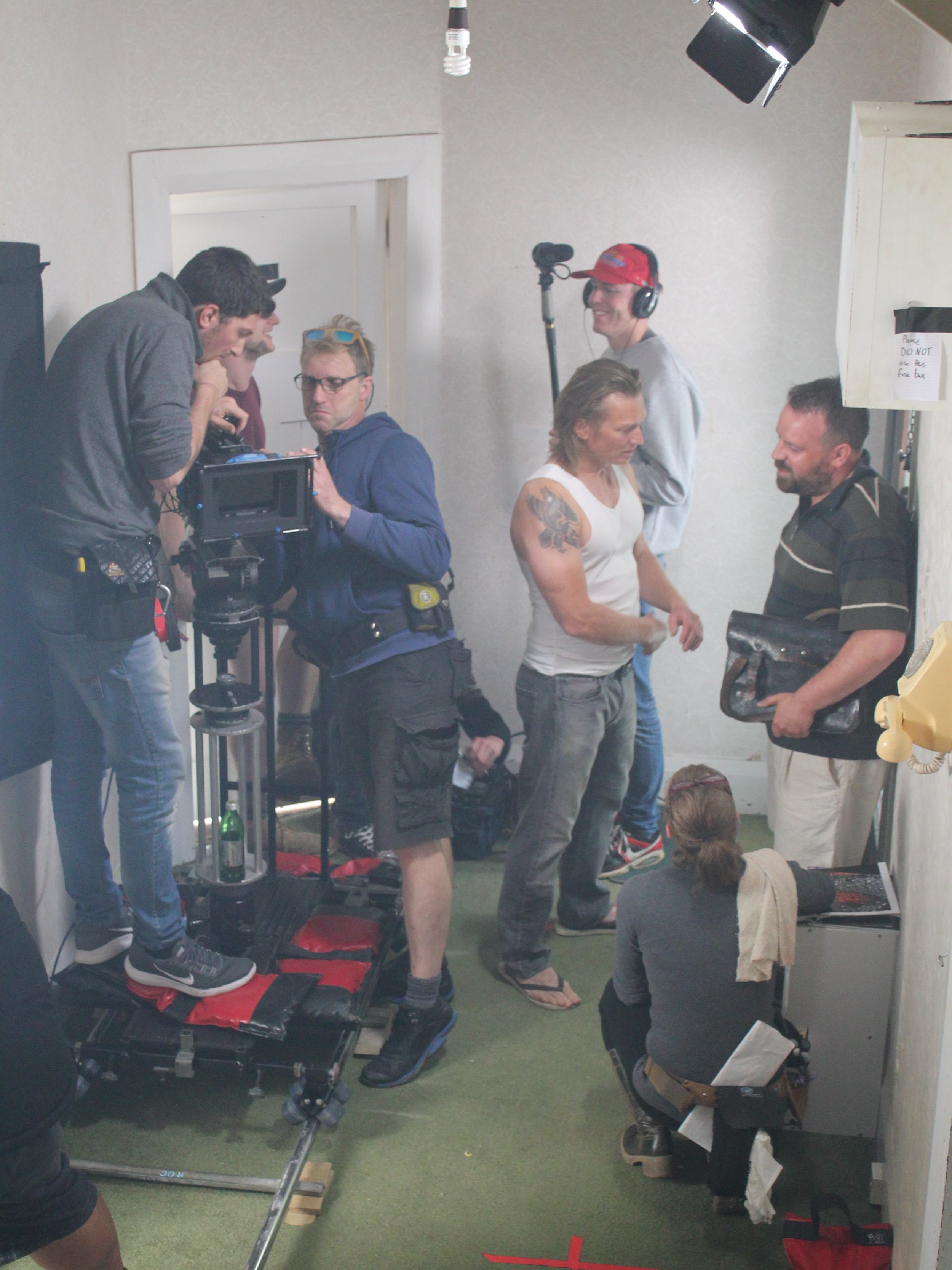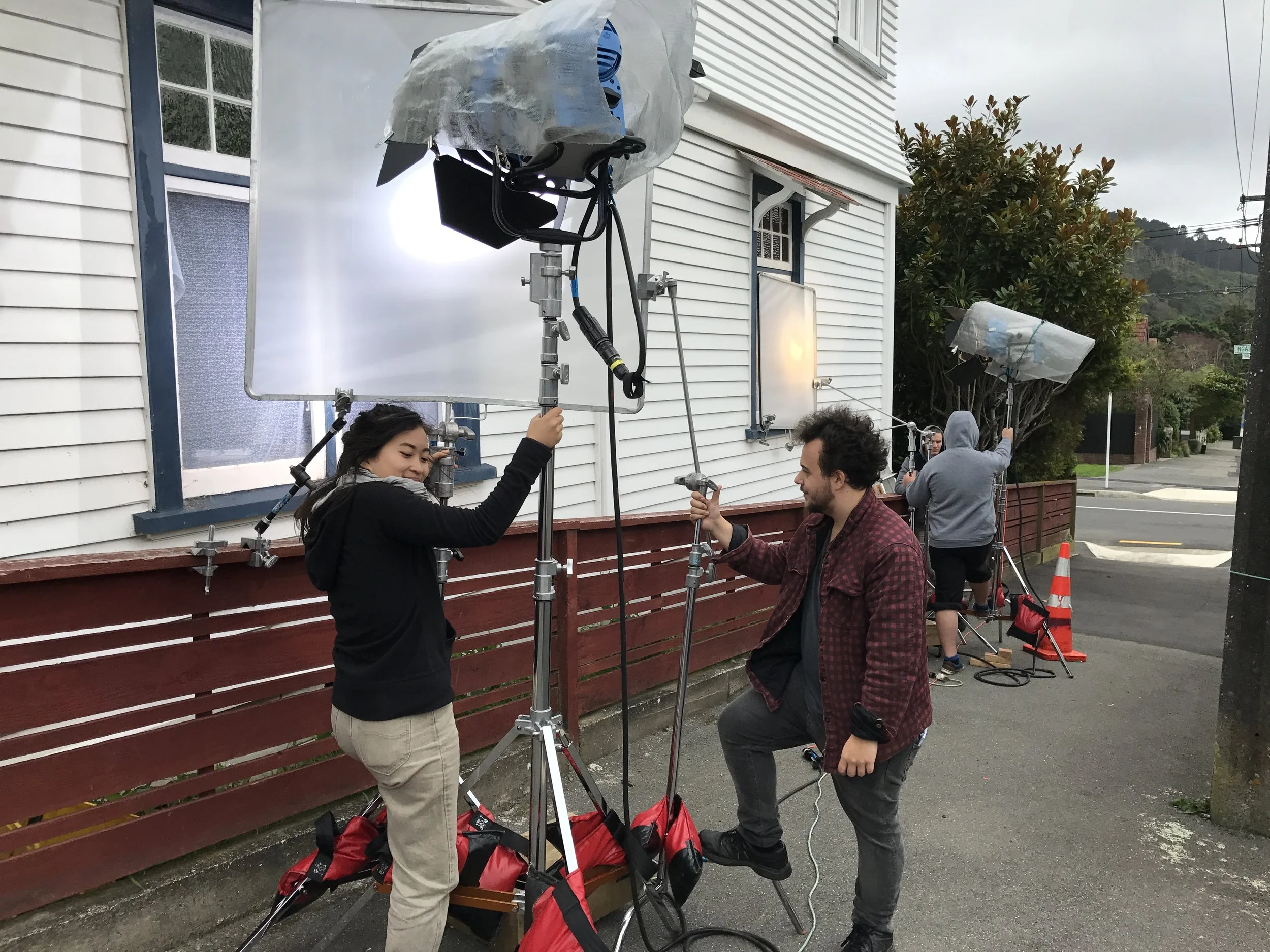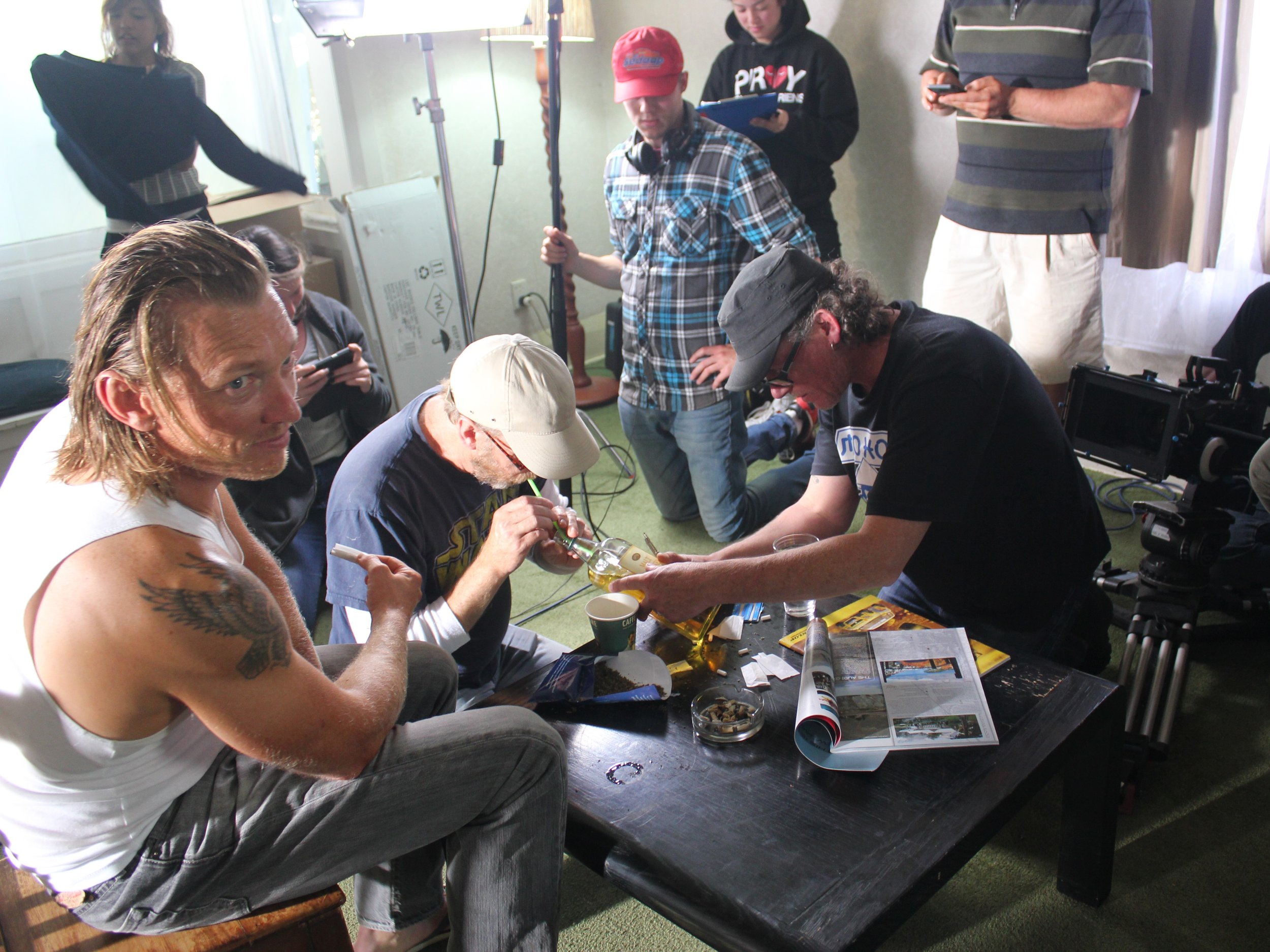Filming Blind Panic
Filmmaking takes a lot of nerve, and those nerves will be shattered when you run out of money halfway through your shoot, or when a big budget movie comes to town and steals your crew. But a great 1st AD makes everything better.
A rundown student house in Kelburn was the backdrop for Louis’ pad.
Background: Blind Panic is the debut feature film of director Mark Willis and producer Matthew Mawkes. The film came about when Mark and Matthew decided to fulfil a long-held dream of making a quality genre movie in their own backyard. Needing a low-budget idea, Mark came up with a story about a man on home detention, while Matthew hatched a story about a blind woman trapped in suburbia. The ideas merged and Blind Panic was born.
Blind Panic was funded by a Kickstarter campaign and filmed on a shoestring budget in Wellington, New Zealand, over 21 days, in April-May 2017. It then took several years of editing and re-shoots to turn Blind Panic into the crime thriller Mark and Matthew originally envisioned. The project also faced a major set-back with the tragic killing of Mark in May 2023. Fortunately, Mark was able to sign off a cut of the film before his death.
This has been a filmmaking journey with ups and downs like no other. But the final product is a crime thriller Mark would be proud of.
Having successfully pulled off our Blind Panic Kickstarter campaign, we finally had the green light to begin principal photography. For Mark and me, the time between crowdfunding (October 2016) and shooting (April-May 2017) was impossibly short – we simply weren’t ready. But with international actor Simon Phillips arriving soon, there was no time to hesitate. Years of procrastination could have stretched ahead of us, so we had only one option: go now, or never at all.
Our first hurdle was securing locations. For Louis’ house, we needed something rundown, and I immediately thought of the quirky old house where we had filmed part of our Kickstarter trailer. Back then, it stood empty – now, it was packed with university students. My proposition: we’ll cover your rent for two weeks if you let us film here – you don’t even have to move out!
Madeleine’s house posed the opposite challenge. We needed something grand, and we found a Silverstream mansion – too big at first glance, but with a reverse Tardis effect, we made it work. That became our philosophy: make it work. On a micro-budget, resourcefulness is everything, which is why much of the film ended up shot in Petone at the home of our long-suffering friends, Justin and Amanda – along with their sons, Oscar and Wyatt, who make cameos in the film.
Madeleine’s house was an enormous mansion in Silverstream.
At some point, Blind Panic became an all-consuming force. Step too close, and you’d get pulled into the maelstrom. Everyone I knew either chipped in money, loaned me a car, or became an extra. Maybe “micro-budget maelstrom” isn’t the right analogy. Perhaps “black hole” fits better – because, well, the rewards weren’t always reciprocal!
The crew were equally generous. Everyone got paid something – though James Cameron’s cigar bill would have cost more than our entire movie.
Keeping crew was where things got tricky. A certain Peter Jackson-penned production, Mortal Engines, was filming at the same time. It explains why we have so many camera and lighting techs. As a producer, I couldn’t blame anyone for choosing its Hollywood wages over ours, but competing for crew against a massive studio film was frustrating. Mortal Engines may have had the deeper pockets, but word on the street was that their shoot was a fiasco. Ours, on the other hand, was a lot of fun. Take that, Hollywood.
Why do people film movies in Wellington? The weather is awful! Our crew holding down the lights on a wet and windy day.
Our 21-day principal photography schedule was ambitious but made possible by the meticulous planning of first assistant director, Sarah Bicknell. The funny thing is Sarah never joined us on set (Mortal Engines strikes again), but her carefully structured daily shoot schedule became my bible. There were a few days when we didn’t even have a 1st AD on set! But that schedule saved us every time.
Poor Mark was miserable throughout filming. I understood why – our budget forced compromise at every turn. A director strives for perfection, wants every frame to match their vision. As the producer, my job was often to say, “We can’t afford it.”
Mark didn’t feel prepared enough. The locations weren’t quite right. Everything could have been better. Yet somehow, he still managed to craft a solid little crime flick. Every moment in the film carries his imprint, which is both heartbreaking and heartwarming.
Mark always had an inner art director. Here he’s helping create authentic-looking whiskey.
The bits I enjoy the most is when his humour emerges, or when I recall a funny moment from on set. There were many of these, such as the day we opened a disused fridge at the back of the students’ house. The smell that emanated – oh my God! Our crew had to seal it shut with gaffer tape and put up warning signs.
One of Mark’s favourite days was when we filmed with a small child and a puppy. Never work with children or animals, they say – but in our case, he created a chaotic, joyful energy that worked perfectly. I also know exactly what he was trying to achieve – a Close Encounters of the Third Kind moment. Not one involving a spacecraft, but one of those chaotic family moments in suburbia with Richard Dreyfuss in his dressing gown. Close Encounters was Mark’s all-time favourite movie, and it’s nice to see a small homage in Blind Panic.
Filming outside the decommissioned Mt Crawford Prison.
For me, every day was a waking nightmare. Who said producing would be fun?! It’s an endless cycle of stress, logistics, and hard, thankless slog, and I started to wake up each day in a blind panic. You can’t control the weather. Deadlines are tight. Creative clashes erupt. You have to be ‘on’ all day, then work into the night.
Worst of all, money was vanishing fast – so fast that halfway through the shoot, I nearly pulled the plug. No one knew except Mark, but we were running on fumes. Only a generous private investor, who sensed the desperation in my voice, saved us from collapse.
As the shoot neared its end, I began dreaming of life after Blind Panic: walking in a park, watching a movie, taking out the trash – ordinary things, blissful in their simplicity.
There’s so much more I could write about those 21 days, but through it all, I have to say – the cast was extraordinary. They endured tough conditions, threw themselves into their performances, and carried the film. Investing in our actors above all else was the right call, and it shows in every scene.
In the end, 21 days wasn’t quite enough. We needed pick-ups to shape our crime flick into a thriller. But looking back, I’m proud. We captured Blind Panic in a bottle.
MATTHEW MAWKES




